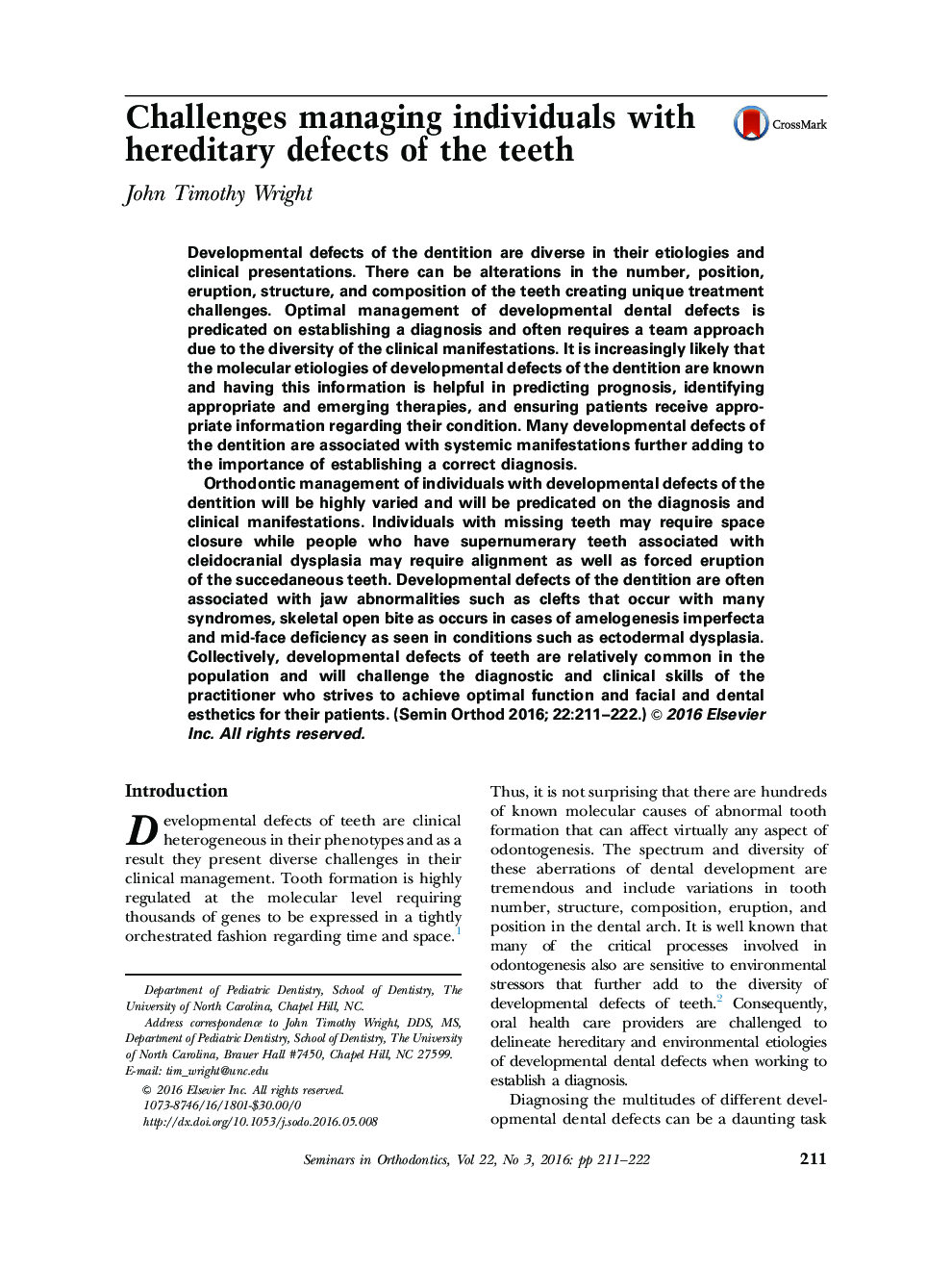| Article ID | Journal | Published Year | Pages | File Type |
|---|---|---|---|---|
| 3175299 | Seminars in Orthodontics | 2016 | 12 Pages |
Developmental defects of the dentition are diverse in their etiologies and clinical presentations. There can be alterations in the number, position, eruption, structure, and composition of the teeth creating unique treatment challenges. Optimal management of developmental dental defects is predicated on establishing a diagnosis and often requires a team approach due to the diversity of the clinical manifestations. It is increasingly likely that the molecular etiologies of developmental defects of the dentition are known and having this information is helpful in predicting prognosis, identifying appropriate and emerging therapies, and ensuring patients receive appropriate information regarding their condition. Many developmental defects of the dentition are associated with systemic manifestations further adding to the importance of establishing a correct diagnosis.Orthodontic management of individuals with developmental defects of the dentition will be highly varied and will be predicated on the diagnosis and clinical manifestations. Individuals with missing teeth may require space closure while people who have supernumerary teeth associated with cleidocranial dysplasia may require alignment as well as forced eruption of the succedaneous teeth. Developmental defects of the dentition are often associated with jaw abnormalities such as clefts that occur with many syndromes, skeletal open bite as occurs in cases of amelogenesis imperfecta and mid-face deficiency as seen in conditions such as ectodermal dysplasia. Collectively, developmental defects of teeth are relatively common in the population and will challenge the diagnostic and clinical skills of the practitioner who strives to achieve optimal function and facial and dental esthetics for their patients.
